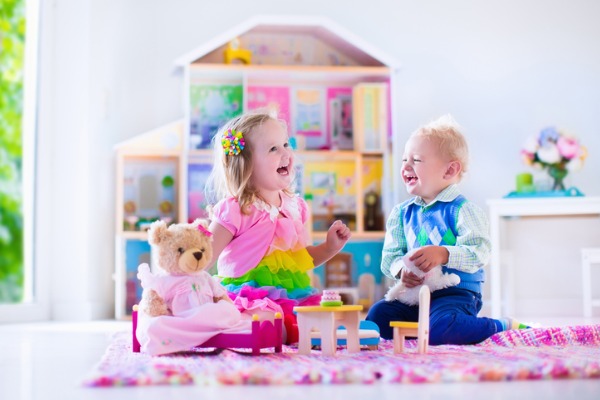What are gender stereotypes? Mel Greenwood describes day-to-day life examples and the importance of challenging gender myths.

On my fertility journey, hoping to start a family, people often ask me ‘what I want’, and this question irritates me more than it should. Answer — I would like to birth a healthy baby with a bright future filled with joy and hope.
My next least favourite topic is gender reveal parties because of the focus on pink and blue. I do not mean to offend anyone, so please, if you have had one or intend to in the future, enjoy it, but I hope this blog helps you think about the focus of the celebration.
In our early years settings, we may be working with children who believe that blue is a boy’s colour, and that pink is a girl’s colour. There already may be children in our care that label themselves a tomboy or favour the train set to the home corner.
One unfortunate moment for me was when a five-year-old boy said he had to stop crying because his dad said, ‘that is not what boys do.’ Our language is essential, and even from a young age, we must open discussions that promote inclusivity and equality, and we must challenge any wrong concepts like blue is for boys and pink for girls.
Language is a start. Ensuring that we are intentional in our language choices is necessary. Ensuring inclusivity and celebrating equality through our language and actions is imperative. Language makes a difference.
I am ashamed to say that I have only recently challenged myself on my use of the word ‘tomboy’ and have started keeping myself in check.
My curious, determined, intelligent, energetic four-year-old niece loves to get dirty, climb, jump, play with cars, to dress as a ‘fireman’ (I have been trying to use the gender-neutral term ‘fireperson’ around her). However, she also loves to draw, play house, make tea, and bake.
I labelled her as a ‘tomboy’, a term that is often used but is, I believe, damaging. I am inadvertently saying to her that these activities are for boys and that these activities are for girls. This is not OK. I needed to change my language choices, so I didn’t support my niece growing up believing that specific actions were not meant for her.
I am sure you have other examples. Talk about them with your colleagues and open discussion that advocates for inclusivity and allows for healthy challenges.
If you see something that makes you feel uncomfortable, address it. We all need to learn from each other.
I love when teachers challenge myths and address misconceptions and different viewpoints. One example was during a Year 5 topic where the main text in a space topic was Hidden Figures. So, of course, Neil Armstrong was celebrated, but women were represented too.
Great PE teachers and coaches allow a range of sporting activities to be enjoyed by all. Discussing great sportsmen and sportswomen in boxing, football, gymnastics, ballet, and other sports your students seem to regard as male-specific or female-specific is extremely important.
Challenging untruths is crucial, and a fantastic way I have seen this done is through focused circle times or morning meetings. It is transformational to allow both boys and girls to talk about their emotions.
I am a massive advocate for embracing and talking about feelings; crying can be healthy, and we must support our children growing up to understand this. Girls and boys have emotions and should be able to express them and seek support if they feel too much of a particular emotion.
Colour days are fantastic as dress-up days because they encourage all children to try wearing different colours. Colour days are also an excellent way to raise awareness of sustainable development goals.
One of my colleagues is a huge advocate for colour days and apart from anything else, pink day always opened many exciting and important conversations.
I am not here to tell you what is right or wrong or to offend anyone, but to highlight the need to reflect and think carefully about our language and actions. I am an avid reader and think it is important to explore a range of books from diverse writers that challenge gender bias and sexism.